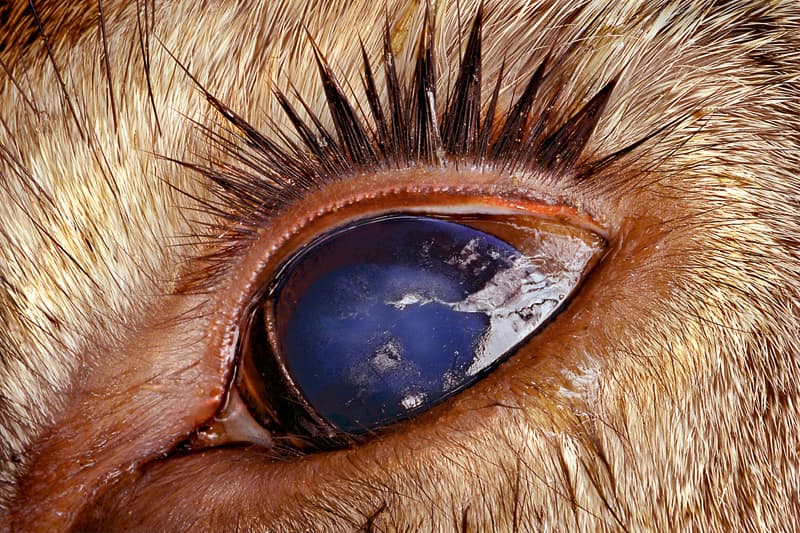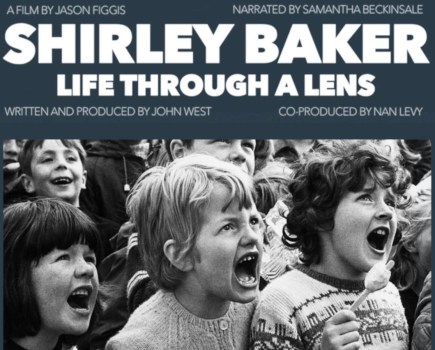Photo Insight with Jim Brandenburg
 For more than 30 years, Jim Brandenburg travelled the world as a photographer with National Geographic magazine. His work has been published in The New York Times, Life and Time, among others, and he has won numerous awards, including Kodak Wildlife Photographer of the Year by the Natural History Museum and BBC Wildlife Magazine. He is the chair of this year’s competition. Every month Jim will share the story behind one of his nature images
For more than 30 years, Jim Brandenburg travelled the world as a photographer with National Geographic magazine. His work has been published in The New York Times, Life and Time, among others, and he has won numerous awards, including Kodak Wildlife Photographer of the Year by the Natural History Museum and BBC Wildlife Magazine. He is the chair of this year’s competition. Every month Jim will share the story behind one of his nature images
This is quite an important image for me because it was part of a project that I worked on some time ago called Chased by the Light. Some readers may be familiar with it, but for those who aren’t it was basically a series of pictures, one taken every day, over 90 days, between the autumn equinox and winter solstice. You can find a lot of the images on my website and I also produced a book about it, Chased by the Light: A 90-Day Journey, that came out in 1998.
This particular photograph was taken on day 57. At the time, I was getting tired because it was one of the most difficult projects I’ve ever taken on. I was very strict with myself and I had to learn to be clever. The nature of my images always settled themselves in a weird grey area between forward planning and allowing chance to guide me. Sometimes I would know what I wanted to capture, but then on numerous occasions I would find myself running into things that almost demanded to be shot.
At around sunset on the evening of day 56, I was sitting on a cliff near my main home in the forest when I heard a sound that I have heard many times before – the call of ravens. At that moment I knew there was a carcass nearby. The sound I heard was essentially a recruitment call to other ravens and it’s a sound I know very well. I have a keen ear and as a result I could virtually tell where this carcass would be. I couldn’t see it, but I knew it would be around two miles away. Right then I knew that the first thing I had to do the next day was to go and see what I could find, as there could be a potential picture waiting and I couldn’t let it slip by.
First thing the next morning I headed towards the spot where I knew the dead animal would be. I could see some ravens and a few eagles circling in the distance, and once eagles appear you know there is definitely something of interest in the area. After a short trek I came across the prize – it was a poacher-killed deer not too far from the highway. Someone had shot it from the road, most likely from the window of their car. The shooter had removed the back-strap or, as some may call it, the loin of the animal, which is just enough for a couple of meals. They then got back in their car and took off. I remember seeing a cartridge case on the road, which I picked up and put in my pocket.
I looked down at the carcass in front of me and realised that I didn’t just want to shoot a picture of a dead deer. It needed to be something more interesting. I think I must have walked around that deer for 15 minutes, thinking and looking at it through my camera’s viewfinder. With the restrictions that I had put on myself for the project, I could only shoot one frame so I had to make it count.

It was a sad way for a deer to die and a real waste, although of course the natural scavengers would come and make good use of it. I decided to take a close-up shot of the animal, so I started moving in closer and closer. It was then that the eye began to intrigue me. The more I looked at the eye, the more it appeared to be in some strange state between alive and dead. Many people have commented that it’s a rather unnerving image. It’s a compelling picture when you see it printed huge – when you walk into a room and see this large eye, you can’t help but be struck by it. I tried to get a reflection of a raven in the eye, but I couldn’t quite get it to work. It doesn’t matter, though, because the image works perfectly well.
After I had taken the photograph I gave the cartridge that I’d found to a game warden. As a result, he found the culprits who shot the deer. The warden went to the local ammunition store and was able to trace the cartridge back to the buyer. The shooter turned out to be the son of the local sheriff. He was a student at a college that taught law enforcement, but in this one lapse of judgement and logic he became a poacher. The fact that he was the son of the sheriff was even more galling.
I shot my Chased by the Light project using negative film because it has more latitude. I could be a little off with my exposure because negative film is far more forgiving than transparency film. I used a Nikon macro lens, possibly a 55mm.
This image was important to my project because when you’re shooting 90 pictures in 90 days you can easily run out of ideas. I have only a handful of pictures out of the 90 that carry a sense of drama, and I think this shot is quietly dramatic.
I’ve shot a lot of pictures of dead animals in my time, and more so recently. Some have been featured in my Photo Insight column in recent months. I do like to shoot death, but more specifically quiet death. While I have images of wolves chasing their prey and tearing a deer apart, it’s those quiet moments of death that happen all around us every day that intrigue me. It’s a delicate subject and magazines sometimes shy away from these things. Death can generate powerful emotions. Death occurs as frequently as birth, because everything dies, but at the same time I don’t want to become known as the guy who photographs dead things all the time!
Jim Brandenburg was talking to Oliver Atwell
To see more of Jim’s images visit www.jimbrandenburg.com







